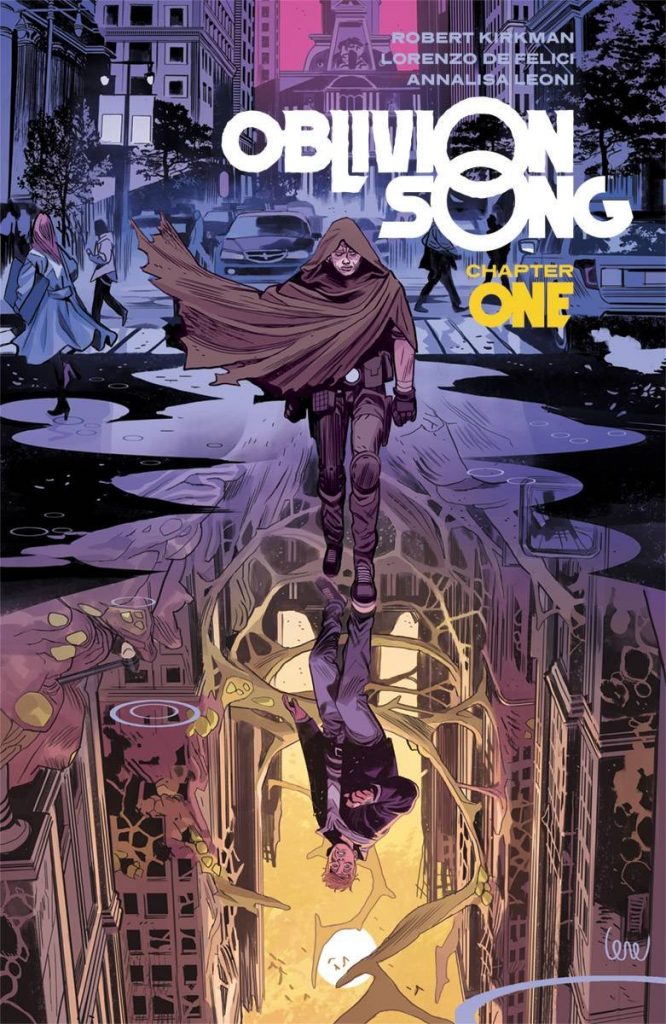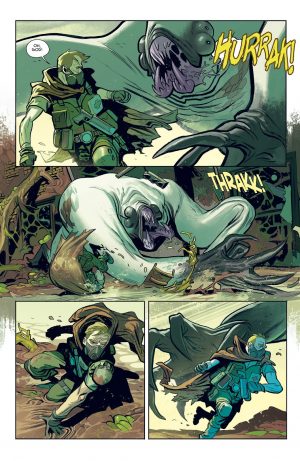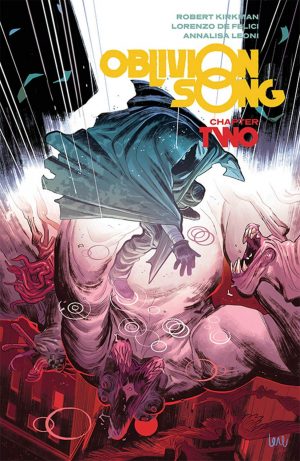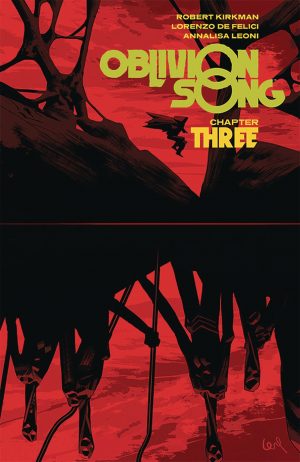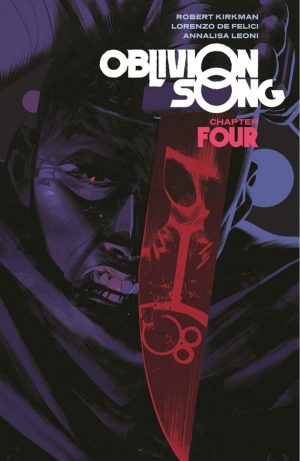Review by Frank Plowright
Robert Kirkman is the master of the hook. Read any single issue he’s written, and there’s always something you’ll want to know more about. How? What? When? Why? He does it every single time. Oblivion Song doesn’t break that streak.
A chase sequence of man in protective gear evading an alien creature in a devastated city opens the series, continued for ten thrilling pages, the length uncommon even for a longer than usual first chapter. As well as intriguing, it shows what a talent Lorenzo De Felici is. He establishes a world in those ten pages, showing the decay, the monsters, the haunted inhabitants and the sheer horror. His people have haunted faces, and even when the action shifts to a more recognisable and comfortable world De Felici’s people are ordinary rather than the usual idealised attractive specimens found in comics. Colourist Annalisa Leoni is essential to the aesthetic, using a muted palette to sell another place, and colour shading to add depth.
Ten years before Oblivion Song opens a vast quantity of Americans disappeared. It’s known they and a portion of a Philadelphia were transferred to another dimension. Nathan Cole has developed technology to transport himself there and return those trapped. He needs funding to continue his mission, but the government wants to move on, considering building a monument naming the missing is enough. An accusation mentioned is that Nathan’s mission is far from selfless and his motivating purpose is to locate his missing brother. He’s a flawed protagonist, his heart being in the right place, but prone to impulsive decisions that aren’t always right, and compulsive about returning to the other dimension even if the cost is alienating the people he loves.
It’s already apparent Kirkman doesn’t see Oblivion Song as a brief in and out visit. He introduces a large cast over six chapters, varying viewpoints and opinions. Nathan is the way into the series, but plenty of others are seen, and Kirkman explores how people adjust having been trapped for years before returning to Earth, one of Nathan’s allies having the equivalent of wartime flashbacks. He also explores how people have adjusted to their new environment. Human drama has always been a strength of Kirkman’s writing, and he doesn’t let a conceptually strong new playground sideline this. Another strength is always directing his plot to a decent cliffhanger chapter ending, with the book’s finale the best of the bunch.
The title is somewhat contrived, at least on the basis of this opening volume, referring to the peculiar sound heard in the other dimension, but the metaphor concerning what’s happened isn’t tidy. That, though, is a very minor point, and Kirkman and De Felici have done more than enough to sell Chapter Two.
As with his other projects, Kirkman offers buyers a choice, and the first two paperbacks are combined in hardcover as Book One.
